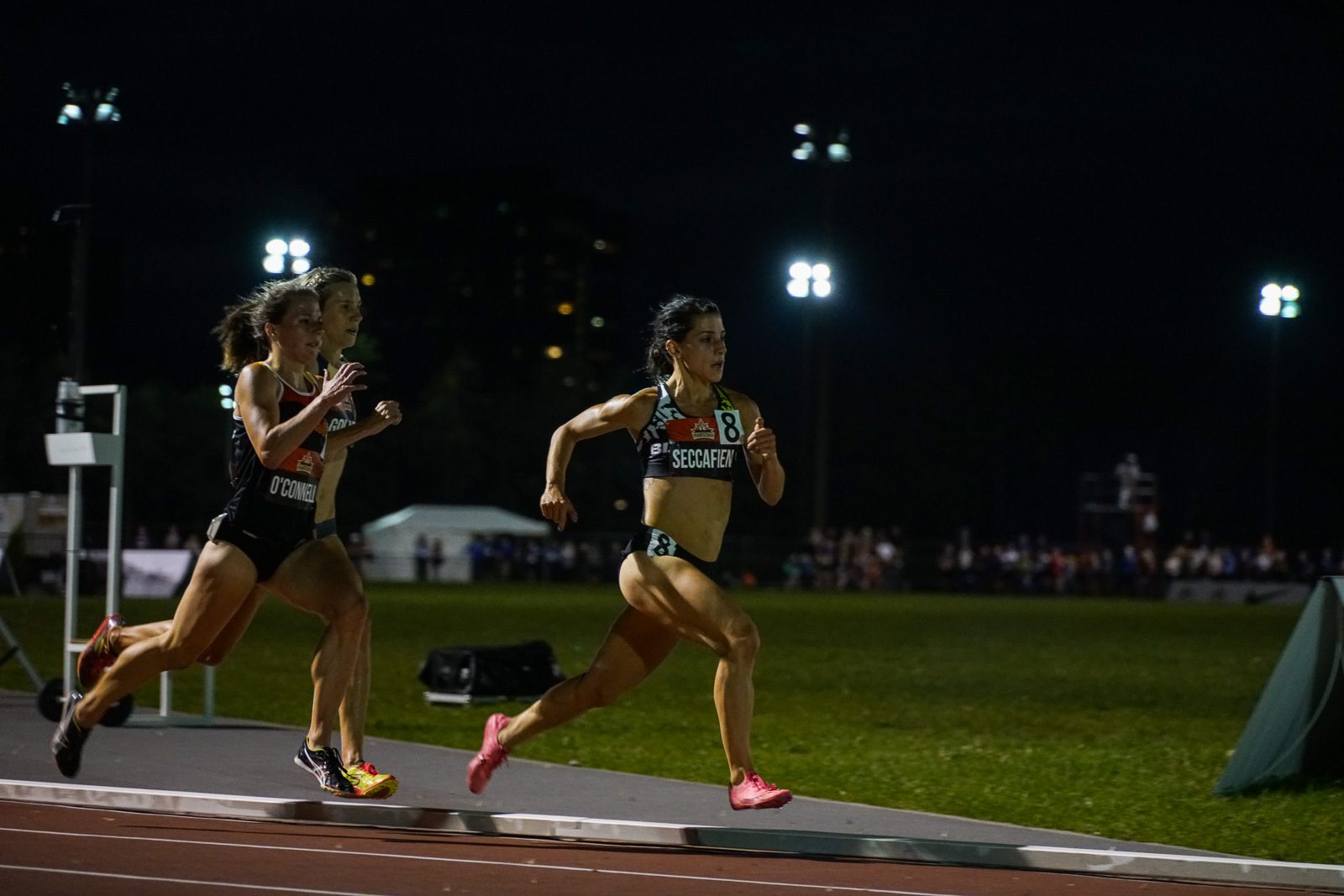Dealing with the jitters that come with the highest level of elite competition
Racing as an athlete, you have to get used to the jitters that come with high level track races. Olympian Andrea Seccafien writes what that feels like.


Racing at top level competition is something that elite track athletes have to get used to. With the World Championships looming, and Canadian track championships now in recent memory, what better time to discuss the ways I prepare mentally and physically?
Let’s start with nationals. The week before the Canadian National Championships always brings about mixed emotions. In some ways, I love this race. I love competing on home soil, I love getting to reunite with former teammates and friends in the sport, and I also love races I can win. At the same time, it also brings about a ton of stress because it’s still a race and it can be much more unpredictable than regular season races.
RELATED: Andrea Seccafien wins national title as un-sponsored athlete
Physical
The week before a race is sometimes tricky to achieve that balance between doing enough but not doing too much. For a bit of guidance at this time, I usually have to look back in my training log to the races where I’ve felt the best.
Ten days out from a race, I usually do a hard track workout that simulates a 5,000m race. This time around, my coach and I decided to do a 3,000m “time trial” as part of the larger plan in preparation for late-season races and, hopefully, personal bests.
Here’s what that workout looks like:
4K warm up
Dynamic warm up drills and strides
2 x 200m/ 1:30 rest at 35
3000m (8:56.4)
5 x 300/ 1:15 rest at 54
4km cool down
Doing workouts like this, and having them go well, is not only great for fitness, but also in building confidence. I came out of this workout feeling like I was ready to defend my National title and secure a spot of the team for Worlds.
Mental
Nationals is a do-or-die situation in the qualification for Worlds. Athletes are required to place in the top two for automatic selection to the team. If you have the standard, and place outside of the top two, your selection is then based on the discretion of the National Team Committee. As we saw from the Olympic selection, you don’t want that to happen…
I go into these races knowing this. Having to place in the top two leaves little room for error and in a national championship situation, the races can be unpredictable. For me, this causes a bit of stress because the mental aspect goes from being ready to be tough enough, to just being ready for anything.
I talk with my sport psychologist, Kim Dawson, about a mental race strategy in the days before a race. By talking with her, I’m able to put stressful or anxiety-inducing thoughts in place and deal with them head on. We come up with cues for me to use during the race at times that are particularly hard.
In tactical races, like nationals, we talk about all of the scenarios that could happen and plan accordingly. By having a plan if it’s fast, slow, or surging, I get to the race feeling well-equipped. Visualization is also huge part of my mental preparation. I try to visualize the race during workouts to train my mind to perform the race imagined. Even if the race doesn’t go as I had rehearsed mentally, using visualization helps calm my nerves before a race by making the race situation seem more familiar on race day.
I also brace myself to accept that I have to perform and I will feel pressure on race day. I find it easier to confront this head on a week before the race so I’m prepared when I really do feel pressure. Up next: world championships.


